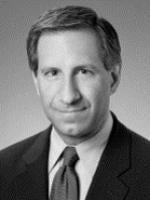In United States v. McKye, No. 12-6108, 2013 U.S. App. LEXIS 17297 (10th Cir. Aug. 20, 2013), the United States Court of Appeals for the Tenth Circuit reversed the conviction of Brian William McKye for securities fraud in violation of Section 10(b) of the Securities Exchange Act of 1934, 15 U.S.C. § 78j(b). The Tenth Circuit held that in a criminal action for securities fraud, the jury must be permitted to determine whether a “security” actually exists. The Tenth Circuit held that the United States District Court for the Western District of Oklahoma erred in not leaving this issue for the jury to decide and instead giving the jury an instruction that “notes” are “securities.”
The United States charged McKye with eight counts of securities fraud, in violation of 15 U.S.C. §78j(b), and one count of conspiracy to commit money laundering, in violation of18 U.S.C. § 1956(h). Heritage Estate Services, LLC (“Heritage”), an entity owned or operated by McKye, prepared revocable trusts for its clients. Clients of Heritage who were unable to afford its trust preparation services were given an option to finance the costs and sign a promissory note agreeing to pay the balance due over a thirty-six-month period (the “trust loan”). Heritage also marketed certain investment notes titled “Premium 60 Accounts.” These notes guaranteed an annual return of between 6.5% and 19.275% for five years. Investors were told their investment notes were “backed by real estate and secured by liens that would be perfected by Global West.” Witnesses testified that some of the money received from the investment notes were used to pay investors, and Heritage and McKye’s personal and business expenses.
At trial, McKye requested the district court to instruct the jury that they must decide whether the investment notes at issue constituted “securities” under the applicable statutes. The district court rejected McKye’s request. It reasoned that “a note [is] considered a security, unless there are certain features to it.” The district court found that the notes at issue met the definition of “securities” and no evidence was presented to conclude otherwise. The jury convicted McKye on conspiracy and seven of the eight securities fraud counts. McKye appealed.
The Tenth Circuit reversed McKye’s conviction, holding that the trial court erred in rejecting McKye’s jury instruction request. The Tenth Circuit reasoned that under Reves v. Ernst & Young, 494 U.S. 56, 63 (1990), not all “notes” are “securities” and certain factors — e.g., motivation, distribution, expectation and risk — determine whether a “note” is a “security.” Thus, “the question of whether a note is a security has both factual and legal components” and is not necessarily automatically outside the province of the jury. However, the presence of a mixed question of law and fact is not sufficient to require a jury instruction. In relying on United States v. Gaudin, 515 U.S 506, 511-13 (1995), the Tenth Circuit noted that “mixed questions of fact and law must only be submitted to the jury if they implicate an element of the offense.” An element of securities fraud is the existence of a “security.” Therefore, since not all notes are securities and the existence of a security is an element of a securities fraud case, the jury should have been instructed to determine whether the investment notes at issue actually constituted “securities.”
The Tenth Circuit disagreed with the government’s argument that the failure to give McKye’s requested jury instruction was harmless error. McKye presented testimony at trial that there was insurance that ameliorated the risk to investors, which is one of the factors for determining whether a “note” is a “security,” and that the Premium 60 Accounts were partially secured by the trust loans. This evidence demonstrated that the issue of whether the investment notes constituted “securities” for the purposes of securities fraud was, in fact, contested.
The Tenth Circuit thus makes clear that in an action for securities fraud a jury, and not the court, must determine whether the “notes” at issue constitute “securities.” The Tenth Circuit reasons that not all “notes” are “securities,” and the presence of a “security” is a necessary element of securities fraud. It is the responsibility of the party alleging securities fraud to establish all of the elements of securities fraud, including the existence of a security. Consequently, the court may no longer direct a jury in such cases that the existence of a “note” is per se the existence of a “security.”



 />i
/>i
